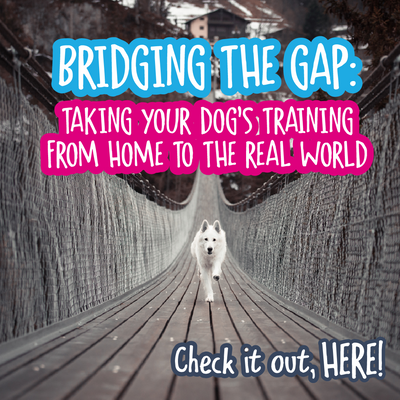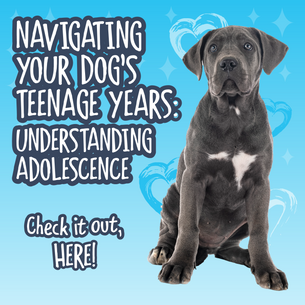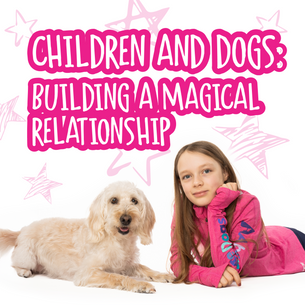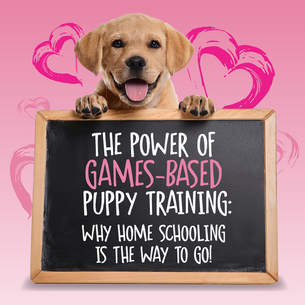"Help! All our training goes out the window the moment we step outside!"
Sound familiar? If so, you’re not alone! So many dog owners find themselves experiencing frustration when their dog seems to forget all their training the moment they step outside. It's as if everything your dog knows at home evaporates in the face of real-world distractions. Suddenly, it’s as if you don’t exist. The world is calling, and you just don’t quite match up to all that excitement!
Don’t worry - we’ve got your back! This blog is here to guide you through the process of transitioning your dog’s training from the comfort of your living room to the wild, changeable world outside.
The gap between controlled home training and the unpredictable nature of real-life environments is a hurdle many of us face. While your dog might perform like a superstar at home, keeping that behaviour consistent when you’re out and about can feel like an entirely different ball game.
We’re here to help you bridge that gap, ensuring your dog stays cool, calm and collected no matter where you are. By the end of this blog, you’ll have a solid, actionable plan to help your dog ace their training in the great outdoors.
We’re talking gradual exposure, consistency, and concept-based training fundamentals that make your dog’s learning journey not just easier but more fun for both of you. Let’s dive in and get your dog ready to take on the world!
Understanding Controlled vs. Real-World Environments
Controlled Environment Training:
Training in a controlled environment - your living room, garden, or a quiet spot at the park - is where it all begins. These are the spaces where your dog can focus solely on you, without the distractions of the outside world. This is where you lay the foundation, teaching your dog those all-important concepts that are going to set them up for success:
- Disengagement (not everything is my business!)
- Proximity (I love to hang out with my owner)
- Calmness (chilling out is a great deal)
- Optimism (novelty is cool)
- Engagement (I can stay focused on my owner)
- Self control (I can control myself around exciting distractions)
These easy environments are the perfect setting for building confidence and consistency.
Real-World Scenarios:
But let’s be real - the world outside your door is a whole different beast. The streets are alive with distractions. Other dogs, noisy traffic, enticing scents, and sudden movements. Out here, your dog might struggle to remember their training as their attention is pulled in every direction.
Real-world training is about more than just remembering commands; it’s about teaching your dog to apply what they’ve learned in a variety of unpredictable situations.
To prepare your dog for real life, you have to shape their brain and their personality so they are ready for all those real life situations, by focusing on the individual skills they need to develop. And this is where concept training is so powerful.
When you focus on the broad skills your dog needs in order to behave appropriately and to feel confident and secure, both at home and out in the world, you prepare them for life!
The Gap:
Bridging the gap between controlled and real-world environments isn’t just about repetition; it’s about helping your dog generalise their skills so they apply anywhere, anytime. Without this step, you risk having a dog that performs well in training sessions but falls apart when the real world comes knocking.
The key to bridging that gap? Gradually increasing the difficulty of the environments you train in, so your dog learns to adapt and thrive no matter where they are.
Why the Transition is Important
Behavioural Consistency:
If there’s one thing we all want, it’s a dog that listens no matter where we are. A dog that behaves perfectly at home but ignores commands outside isn’t truly trained. Consistency is king, and it’s crucial for both your peace of mind and your dog’s safety.
Imagine the confidence of knowing your dog will come when called, even in the middle of a busy park. That’s the power of solid, consistent training. That’s when you know that value for proximity, and an ability to disengage from distractions, mentally as well as physically, are truly part of your dog’s learning.
It’s when you know for sure that your dog sees you as the very best source of fun, no matter what the environment might be trying to tempt them with!
Socialisation:
Let’s talk about socialisation. A well-socialised dog is a confident, happy dog.
This isn’t about having a dog that thinks everything and everyone is their business. It’s about a dog who is robust in the face of novelty, confident in new environments and able to handle whatever life throws their way.
Proper socialisation isn’t just about getting out there; it’s about doing it right. This is where your dog learns to navigate the world with grace and calmness, and it starts with gradually introducing them to new experiences.
Safety:
At the end of the day, transitioning your dog’s training from the controlled environment of your home to the great outdoors is about keeping them safe.
A dog that responds reliably to commands in any situation is less likely to engage in risky behaviour. Whether it’s avoiding traffic or steering clear of unfamiliar dogs, a well-trained dog is a safe dog. And that’s what we’re aiming for.
Challenges in Transitioning to Real-World Training
Distractions:
Let’s face it - distractions are everywhere in the real world. In the safety of your home, your dog can focus on you pretty easily. But out there? It’s a different story.
Dogs are constantly asking themselves three questions:
- Am I aware?
- Is it important?
- Is it good or bad?
That second question is crucial. Whether your dog finds the world overwhelming, or far too exciting, they tend to answer that second question with a “yes” far too frequently. And when everything is important, your dog isn’t going to be making the best choices. Those distractions are not only competing for your attention - they’re probably winning.
This is why training FOR the situation is such a vital aspect of the way we set our dogs up for success here at Absolute Dogs.
Rehearsal is powerful, so if your dog is repeatedly put in challenging situations before they have the skills to make the right choices or rehearse the best emotional responses, you’re setting them up for failure. With repeated exposure, your dog will attribute more and more importance to things and as a result, MORE things will become important!
That’s why it’s crucial to introduce distractions gradually, giving your dog the tools they need to stay calm and focused.
Fear and Anxiety:
We’ve all been there - watching our dog’s confidence crumble when faced with a new, challenging situation. It’s heartbreaking, and it’s a big reason why moving too quickly can backfire.
Trying to train your dog in an environment they’re not ready for is like trying to sprint before you can walk.
Remember, training should be fun and rewarding, not stressful or overwhelming. Whether you and your dog are working on recall, loose lead walking, calmness around visitors, appropriate interactions with other dogs, or any other skill your dog might need as you journey through life together, training should start at home, and in easy environments where your dog is going to learn, and those building blocks are going to get strengthened.
Then, when you take your dog out and about to more challenging situations, they will have the skills to tackle those situations with ease, make the very best choices and feel like a winner.
Start slow, build their confidence, and watch them shine.
Brains Don’t Grow in Comfort Zones:
It’s tempting to avoid the stress altogether, isn’t it? To stick with what’s comfortable, where your dog behaves well and you can breathe easy. But here’s the thing. Staying in your comfort zone can actually hold your dog back.
There comes a point when it’s time to start expanding their world, to gently push those boundaries and encourage growth. Just remember to take it one step at a time, and don’t rush the process.
Step-by-Step Guide to Transitioning Dog Training
Start Small:
You wouldn’t dive into the deep end without first testing the waters. The same goes for your dog. Start by introducing them to easier environments, like a quiet park or a less busy street. These are the baby steps that build confidence.
Playing on-lead recall games in a quiet car park, a hired field or even in a friend’s garden can be a game-changer. It’s all about setting your dog up for success, one small step at a time.
Long lines and puppy lines are great ways to bridge the gap between the total responsibility of off-lead freedom and the restriction of being on lead.
Gradual Exposure:
Rome wasn’t built in a day, and neither is a well-trained dog. Gradually increase the difficulty of the environments you expose your dog to. As they grow more comfortable, you can start introducing busier, more challenging settings.
Whether your dog finds the world far too exciting, or a little overwhelming, this is all about working at a safe distance from any triggers, allowing them to build their skills and confidence at their own pace.
Before stepping foot outside to enjoy some out and about training, do you know which environments your dog would struggle in?
This information is gold.
If you increase the difficulty and challenge of the environment too soon, it’s frustrating for you and confusing and conflicting for your dog. Heading to an environment knowing that you are setting your dog up for success before you even arrive will lead to super-charged training success.
A great exercise to help with this is to rank all the environments you and your dog might visit, from easiest to hardest. This is a brilliant way to determine which environments to visit knowing that you will get training success, and which to avoid until you have grown and nurtured your dog’s skills through the power of games.
Looking for games and strategies to help - as well as your very own “Squirrelometer” for ranking your dog’s training environments? Our Sexier Than A Squirrel Dog Training Challenge is the perfect introduction to games-based training, and the perfect way to start teaching your dog all those really vital concepts that will allow you to level up your training and see real-life success in a world full of distractions.
Consistency is Key:
Dogs thrive on consistency. If “sit” means something different at home than it does when you’re out on a walk, your dog will be confused, and confusion leads to inconsistency.
Whether you’re in the living room or the middle of a bustling street, your commands and expectations should be the same. Consistent training creates a dog that knows exactly what’s expected of them, no matter where they are.
Use Positive Reinforcement:
Let’s keep things positive! Reward your dog for every awesome choice they make, whether with some of their daily food, praise, or a favourite game. Ditching the Bowl gives you endless possibilities to reward and reinforce your dog in a currency they truly value.
Games aren’t just about having fun - they’re powerful tools for teaching all those really vital concepts like disengagement from distractions and confidence around novelty.
This approach not only makes training more enjoyable but also strengthens your bond with your dog. After all, who doesn’t love a little positive reinforcement?
Leashes, Leads and Long Lines:
A long line can be your best friend when transitioning to real-world environments. It gives your dog a sense of freedom while still allowing you to maintain control, which is especially important when distractions are in full force.
Leash training isn’t just about keeping your dog safe. It’s about setting your dog up for the very best success, building trust and teaching them to navigate the world confidently and responsibly.
Check out the Absolute Dogs store for a brilliant selection of training aids to level up your training game.
Practice, Practice, Practice:
You know the saying - practice makes perfect. Rehearsal is powerful. Dogs will do more of what they practise - especially if that thing is rewarding. Regular practice in a variety of environments is key to helping your dog generalise their training.
Once you’ve built a powerful reinforcement history of your dog making great choices and choosing you over distractions in easy environments, take your games on the road. Play them in new locations to help your dog stretch their learning and avoid hitting a plateau.
The goal? A dog that’s confident, calm, and responsive, no matter what the world throws their way.
Real-World Training Scenarios
So how might that look practically? Let’s consider two real life scenarios you and your dog might be working towards and think about a solid plan for bridging that gap between easy environments and the real world.
Scenario 1: Off Lead Adventures:
The foundation of great off-leash freedom is value for proximity! If your dog sees you as the best source of fun and truly wants to be with you, your adventures together will be enjoyable and stress-free for you and your dog.
You can teach your dog to see you as the centre of all things fun and rewarding by being intentional about the games you play and the concepts those games are strengthening.
When you think about where you put value and fun (with your dog’s daily food allowance, with your reward experiences and through your games), you need to make sure the focus is right. Proximity is all about teaching your dog that there is value in staying close. To develop value in proximity means to grow a reward zone, a space around you - almost a bubble - where your dog wants to hang out. A dog who has amazing value for proximity will have awesome off-lead freedom, super recall and amazing loose lead walking.
Proximity truly is power!
Start by playing games that power up your dog’s value for proximity at home, away from distractions that might compete for their attention. Games like Middle, Feet on Mine and Circling Your Body are brilliant options - and you can find the step-by-step for teaching them in our blog 5 Top Tricks Every Dog Should Know: Training for Fun and Practical Real-Life Skills.
Once your dog is rocking their training at home, level up. Remember that this doesn’t need to mean a giant leap to the big wide world full of distractions. Simply taking your games to a different room of your house, or a different corner of your garden, can be enough of a challenge to begin with. Play both on and off lead so you and your dog already have a history of playing together on lead before you venture out.
As your dog continues to succeed, you can begin taking your games out and about. This is where that exercise of ranking environments in order of difficulty will come in handy. Start by visiting these new environments during quieter times, gradually increasing the level of distraction and challenge as your dog’s confidence grows.
Play recall games on a long line to reinforce great choices and reward your dog for staying focused on you, even with other dogs and people around. This will help your dog transition smoothly from controlled environments to more unpredictable real-world settings.
Scenario 2: Helping Your Reactive Dog Handle Walks with Confidence
If you’re working with a reactive dog who struggles to interact appropriately with other dogs, or who finds the world overwhelming, protecting their optimism and safeguarding their experiences is so important.
Ditching the walks for a period of time, making your dog’s world smaller and limiting their exposure to difficult situations gives you a window within which you can reshape their brain. By playing games that build optimism and disengagement outside of the situations your dog struggles with, you give them the skills to handle more challenging environments like a pro.
However, with scarcity comes increased importance.
If you think back to those three questions, the less your dog is exposed to, the more significant (“important”) those events become. You therefore need to find that balance between managing exposure and being careful not to create scarcity, which makes events more important precisely because they are so scarce.
So how do you grow your dog’s world at the right pace?
When setting out your game plan it can be helpful to consider all the steps that exist between exposure and no exposure.
Working in this way allows you to open up your dog’s world at the right pace without making it too hard too quickly - and without managing everything so carefully that the picture always looks perfect, which will stop your dog from growing.
You can begin opening up your dog’s world by working at a safe and appropriate distance from your dog’s triggers. The key thing to remember here is that you are looking for improvement over time – not for it to look perfect all the time! Don’t judge your progress on how it looks in the moment. Instead, consider whether it is getting better or worse over a number of sessions.
Identify five locations where you can work at an appropriate distance from your dog’s triggers, and keep a record of your training sessions in those five locations over the next five days. Remember that it won’t look pretty all the time. If your locations have been chosen to set your dog up for success, you should see that picture improve over time.
Alongside this kind of distant exposure, it is also worth considering whether there are any parallel situations you can take advantage of in order to stretch your dog’s learning.
Perhaps your dog used to bark and lunge at people and dogs whenever you went out into the world. By playing games and building your dog’s optimism and disengagement skills you have seen amazing progress in your dog’s reactivity to people - but the struggle still exists when you encounter other dogs.
As well as playing games that grow your dog’s confidence and build their skills at an appropriate distance from other dogs, find a way to stretch your dog’s learning around people. That might be in one of the following ways:
- Work in noisier environments with people
- Work closer to people
- Work with more ‘novel’ people
Remember, the goal here isn’t to put your dog in situations they can’t handle or aren’t ready for. Instead, it’s a way of using situations that your dog now has the skills to cope with as a springboard to level up their learning in other areas.
Keep a record of your parallel training sessions and record your observations. Are you able to push your dog’s learning further outside of their biggest area of struggle? Over time, you should see this learning translating to that main struggle. That really is the power of playing games that grow concepts.
Common Mistakes to Avoid
Skipping Gradual Steps:
One of the most common mistakes owners make is moving too quickly from controlled environments to chaotic ones.
Making your dog’s world too small or too big too quickly can lead to setbacks. It’s essential to take incremental steps, gradually increasing the difficulty of the environments you train in to ensure your dog remains confident and capable - while remembering the importance of levelling up in order to grow your dog’s skills.
Inconsistency:
Consistency helps reinforce your dog’s training and ensures they understand what’s expected of them, no matter where they are.
Overexposure:
Introducing too many new challenges at once can overwhelm your dog, leading to fear and anxiety. It’s important to strike a balance between challenging your dog and ensuring they’re comfortable with each new step. Gradual exposure allows your dog to build confidence at their own pace.
Additional Tips for Success
Know Your Dog’s Limits:
Every dog is an individual and it’s vital to work with the dog in front of you and adjust your training plan based on what you’re seeing.
Remember that every dog has a bucket - that stress threshold beyond which learning is compromised and behaviour deteriorates. Keeping your dog’s bucket in mind whenever you begin to open up their world and expand their experiences is vital.
You may need to play around with your training schedule to make sure you are making progress and pushing yourself and your dog on, but not filling their bucket to the point where learning is not happening. This is where keeping a record of your sessions will be so helpful.
Track Your Progress:
Just like in life, dog training is all about those small, consistent steps that lead to giant leaps of success.
It can be all too easy to put immense pressure on ourselves and our dogs to make instant progress. But here's the secret: progress doesn't always come in huge, flashy achievements. It's in the everyday victories, the tiny breakthroughs, and the moments of connection and consistency that make the biggest difference over time.
And keeping track of those wins is so vital!
Keeping a record of your training sessions is a brilliant way to track your progress and keep yourself accountable.
Read more and discover your free downloadable Training Journal in our blog Unleashing Success: The Importance of Momentum, Focus and Realistic Goals in Dog Training.
Incorporate Play:
Here at Absolute Dogs, games are the heart of our training. By playing games that build your dog’s skills, you’re setting them up for a lifetime of success - and having brilliant fun at the same time! That is the true power of games-based concept training.
If you want the ultimate in positive and fun training for your dog, check out the AbsoluteDogs Games Club - it’s dog training gamified!
Hello World!
Transitioning your dog’s training from controlled environments to the real world is a gradual, step-by-step process that requires patience, consistency, and the right strategies. By understanding the difference between controlled and real-world environments, recognising the challenges, and following a structured approach, you can help your dog become a well-behaved, confident companion in any setting.
Remember, progress takes time, and every small step forward is a victory. Stay committed to your dog’s training, and don’t get discouraged by setbacks. And of course you don’t have to tackle the tricky terrain of your dog’s training journey alone, especially if you’re unsure what stage your training is at.
Take the worry and the guesswork out of deciding when to push forward in your training, and when to hold back by joining our amazingly supportive Games Club community.




